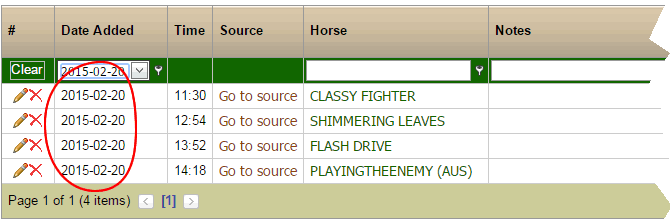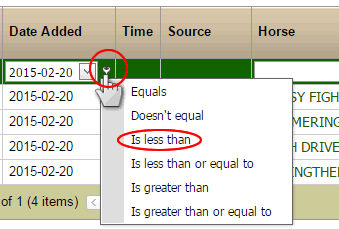
Filtering is the user action of changing or setting filer options to reduce the display output to show only specific information.
Filtering is somewhat akin to a search. The main difference is that with filtering the user takes a report that is too detailed or contains information that the user is not interested in and then reduces the output to only contain the information he is interested in. In a search a user starts with an empty report and inputs something for the system to look (search) for.
A filtering action either filters in specific information or filters out information not desired. Filtering usually allows for various combinations so that the user can get pretty close to, if not exactly, what he wants to see.
As at the release of version 3 of Formgrids only a few views (display reports) use the new filtering technique. More and more views will be reprogrammed to use the new filtering methods as the Formgrids website grows and is enhanced.
There are a number of views that still use the older filtering methods. They still work well and are easy to use; therefore not much will be spent on help topics for those.
The Watchlist uses the new filter controls and makes for an excellent example; so this will be used to show you how to use them.


The result. Only rows with the selected date are shown.
There are options to change the filtering method:

Choosing "Is less than" will display all rows earlier than the date selected.
Columns containing text information such as, for instance, the horse's name is filtered by typing text into the filter box. For example, typing in an "s" and waiting a few seconds will show all horse's whose name starts with an "s".

Text filtering also has options to select the filtering method. In the example below, the "Contains" method was selected and the text in the filter box is "sh". This filter setting then displays rows where the horse's name has "sh" anywhere in its name.

For certain columns a special filter has been implemented to make it even easier to apply a filter.

The special filter appears on its own next to the column header. See the red and orange circles.
The red circle indicates which special filter was clicked. The orange circles indicate the other columns which also have special filters. Special filters all have three standard options:
After these options the system will list all the different values that exist. In this example, there is only one date. If there were several dates, they will all be listed.
Use the top three options as follows:
| (All) | Use this to set the filter to show all the rows again. It kind of works like a column filter clear. |
| (Blanks) | Use this to show all the rows where the value in that column is a "blank" or empty. |
| (Non blanks) | Use this to show all rows where the value in that column is NOT empty. In other words, show all rows where there is some info in that column. If you wanted to see only the horses in the Watchlist that are carded then this would be a good filter option to use. |

Click the "Clear" link button to clear or reset all filters.
| Created: 2015-02-20 | Revised: ~ |